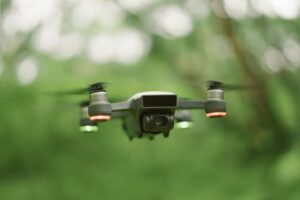
The Commercial Drone Alliance (CDA) and the Association for Uncrewed Vehicle Systems International (AUVSI) have jointly released a comprehensive guide clarifying the Federal Aviation Administration’s (FAA) UAS Remote Identification (RID) Rule. This guide serves as a resource for operators and manufacturers navigating the complexities of the RID Rule, which mandates drones to broadcast identification and location information akin to a digital license plate.
The FAA’s discretionary enforcement period for drone operators and manufacturers to adjust to the RID Rule’s requirements has ended, marking a transition to stricter enforcement. As of March 16, 2024, drone operators are expected to fully comply with the operating requirements of the RID Rule. A similar grace period for manufacturers ended in December 2022.
The enforcement of the RID Rule is crucial for distinguishing authorized from unauthorized drone operations, thereby enhancing the safety and security of airspace. Lisa Ellman, Executive Director of the CDA, emphasizes the rule’s importance: “Addressing safety and security is necessary in order to achieve scaled commercial drone operations.” She further asserts that compliance with industry RID rules will unlock numerous benefits, including enhanced safety, security, sustainability, and public health, across communities in the United States.
Clear Answers to Frequently Asked Questions on Remote ID
The detailed FAQ document accompanying the press release addresses common queries about the RID Rule, providing essential guidance for compliance. It outlines the steps necessary for both operators and manufacturers to adhere to the rule, highlighting the different pathways to compliance and the distinction between standard RID drones and RID broadcast modules.
Michael Robbins, Chief Advocacy Officer at AUVSI, highlights the goal of the document: “By providing a resource that addresses our community’s questions around the rule, our aim is to support widespread commercial drone operations and the benefits they bring to the communities where they operate.”
For manufacturers, the guide specifies the requirements for producing standard RID drones and broadcast modules, including compliance audits and the submission of a Declaration of Compliance (DOC) to the FAA. Operators are guided on how to ensure their drones meet the RID specifications, whether through operating standard RID drones, equipping non-standard drones with broadcast modules, or operating within FAA-Recognized Identification Areas (FRIAs).
The document also sheds light on special considerations, such as the inability to fly drones equipped with RID broadcast modules beyond the visual line of sight (BVLOS) without a specific waiver. It underscores the importance of manufacturers adhering to FAA-accepted Means of Compliance (MOC) to demonstrate their products meet the minimum performance requirements set by the RID Rule.
The collaborative effort between CDA and AUVSI to produce this guidance document signifies a critical step towards the safe and secure integration of commercial drones into national airspace. For further details and comprehensive answers to frequently asked questions about the UAS Remote Identification Rule, the full FAQ document can be accessed here.
Read more:
- SkySafe Study Reveals Some Drone Manufacturers Fail to Meet Published Remote ID Standards
- FAA Clarifies Remote ID Deadline Extension: “Don’t Wait“
- An Open Conversation with the FAA: Remote ID, BVLOS Rulemaking Date, and More
Miriam McNabb is the Editor-in-Chief of DRONELIFE and CEO of JobForDrones, a professional drone services marketplace, and a fascinated observer of the emerging drone industry and the regulatory environment for drones. Miriam has penned over 3,000 articles focused on the commercial drone space and is an international speaker and recognized figure in the industry. Miriam has a degree from the University of Chicago and over 20 years of experience in high tech sales and marketing for new technologies.
For drone industry consulting or writing, Email Miriam.
TWITTER:@spaldingbarker
Subscribe to DroneLife here.